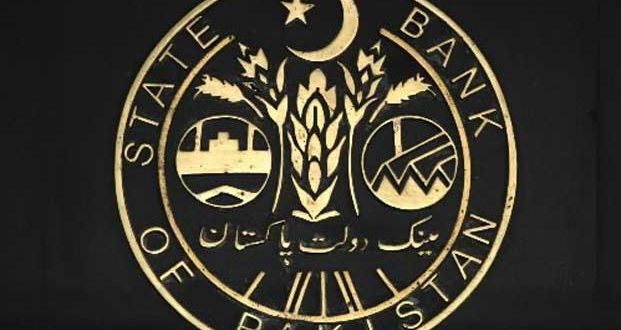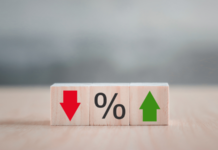
LAHORE: Maintaining its hawkish trend, the State Bank of Pakistan (SBP) on Thursday announced a 25 basis points hike in the key interest rate to 10.25%, touching six-year highs.
This makes it a cumulative increase of 450 basis points since January 2018, taking it to a six-year high of 10.25%.
While addressing a press conference on Thursday, SBP governor Tariq Bajwa stated that the Monetary Policy Committee (MPC) had observed the effect of the governments’ stabilization measures were gradually unravelling.
He added that consumer confidence had exhibited improvement amidst decreased economic uncertainty.
However, Mr Bajwa said the fiscal deficit is yet to exhibit indications of consolidation notwithstanding the decrease in Public Sector Development Programme (PSDP) spending.
He elaborated that a pronounced movement in the pattern of government borrowing from scheduled banks warrants inflationary worries.
SBP governor explained, “Even as stabilisation measures gradually work through the economy, underlying inflationary pressures persist.”
Mr Bajwa said a slight rise in exports and healthy growth in remittances had assisted in reining the current account deficit, however, “it still remains high.”
According to the SBP governor, the financing of the current account deficit remained daunting as foreign direct investment, official inflows and private loans were inadequate to totally fund the deficit.
Hence, a major chunk of the current account deficit was managed by exhausting the country’s own foreign exchange resources, which caused SBP net liquid foreign exchange reserves to decline to $7.2 billion by end of December last year, said the central bank chief.
The central bank chief shared the realization of bilateral official inflows in the last few days has helped raise SBP net liquid foreign exchange reserves to $8.2 billion and the overall forex reserves to $14.8 billion as of January 25th.
A note from Arif Habib Limited (AHL) Research said, “We believe the SBP might increase the policy rate by another 25bps during CY19 contingent to finalization of the IMF program in next couple of months.
The contractionary monetary policy is required to curb growing inflationary pressure and imports via compression of domestic demand.
Moreover, the international oil and commodity prices are expected to play a vital role as stabilizing/increasing global oil prices are expected to be negative for inflation and balance of payment.”
According to the central bank, the economic data released after the last monetary policy committee in November last year indicate that the stabilization measures executed during the previous twelve months are taking hold.
Additionally, key monthly indicators are exhibiting clear signs of deceleration in domestic demand and hence the current account deficit is narrowing, although gradually.
Moreover, SBP said the rise in financial inflows is contributing to reduced stresses on the country’s external accounts.
It added these developments are promising and contributed to decreasing some economic uncertainty.
But the central bank cautioned challenges to Pakistan’s economy persist despite narrowing as the current account deficit remains high, the fiscal deficit is elevated, and core inflation remains continuingly high.
Average headline CPI inflation was recorded at 6% for the first half of FY19, which was way higher compared to 3.8% recorded during the corresponding period of FY18.
Also, the headline inflation on a year-on-year (YoY) basis has shown moderation in the last two months, majorly because of a steep plunge in prices of perishable food items and a decrease in petroleum product prices.
However, SBP stated going forward, the second round of impacts of the exchange rate movements, increase in gas and electricity tariffs, higher government borrowings from SBP are likely to be neutralized by the delayed impact of the increase in interest rates and a decline in global oil prices on inflation.
Its projected inflation to remain unchanged between 6.5 to 7.5%.
As per SBP, the rise in inflation and the continuing economic challenges are having an impact on economic performance and real economic activity has exhibited a marked slowdown during the first half of FY19.
It highlighted large-scale manufacturing contracted during the first five months of FY19 including a decline in production of all major Kharif crops from 2017’s levels.
And the initial assessment of the wheat crop isn’t encouraging too, said the central bank.
It projected the effect of changes in commodity producing sector on the services sector is likely to cause real GDP growth to contract to around 4% for FY19, well below the annual target of 6.2%.
And the credit to private sector (CPS) exhibited a net increase of Rs570.4 billion in the first half of FY19, approximately double the level of growth during the corresponding period of FY18.
“In absolute terms, net budgetary finance from SBP reached Rs 3,770.5 billion during 1st Jul-18th Jan FY19, which is 4.3 times the amount borrowed during the same period last year,” said SBP.
SBP believes this financing will have inflationary consequences in the future and a major chunk of this borrowing was used to retire government debt from commercial banks i.e. a net retirement of Rs3035.8 billion.





